#Baro icons
Explore tagged Tumblr posts
Text
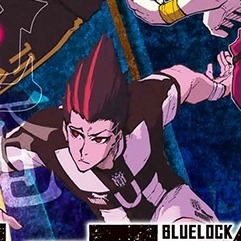






⌕ blue lock • new illustration!
like or reblog if you save/use.
#bluelock#blue lock#blue lock manga#blue lock anime#blue lock icons#jump comics#isagi yoichi#isagi#isagi icons#barou shouei#barou#barou icons#baro#baro icons#nagi#nagi icons#nagi seishiro#bachira#bachira icons#bachira meguru#rin#rin icons#itoshi rin#anime layouts#anime icons#manga icons#animes layouts#twitter layouts#manga layouts#anime packs
93 notes
·
View notes
Text
under the cut you will find 30 icons of Shoei Baro from blue lock ep 21. like or reblog if you use please & thank you <3






























5 notes
·
View notes
Text










BLUE LOCK: ICONS ☆*: .。. .。.:*☆
#like or reblog to use!#blue lock#isagi yoichi#bachira meguru#chigiri hyouma#chigiri hyoma#nagi seishiro#nagi seishirou#kunigami rensuke#reo mikage#barou shoei#baro shoei#tsurugi zantetsu#rin itoshi#sae itoshi#anime icons#blue lock icons#icons: tsukihimee#anime graphics#blue lock graphics
420 notes
·
View notes
Text







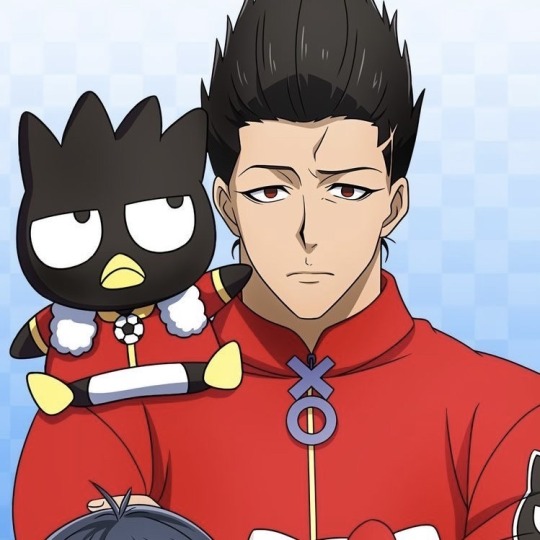

#blue lock#blue lock icons#blue lock pfps#Asahi Naruhaya#Rensuke Kunigami#Yoichi Isagi#Meguru Bachira#Seishiro Nagi#Rin Itoshi#Sae Itoshi#Michael Kaiser#Shoei Baro#Pablo Cavasoz#Kenyu Yukimiya#Hyoma Chigiri#Reo Mikage#Eita Otoya#Ryusei Shidou#Jyubei Aryu#Ikki Niko#Tabito Karasu#Haichi#Aoshi Tokimitsu#sanrio#hello kitty#anime moodboard#moodboard#random moodboard#anime#anime boy
564 notes
·
View notes
Text
BARONESS VON BON BON GRAPHICS
Day 2 (not late) of @rwuffles 700 follower event! ::
"your least favorite video game character"



Her boss fight is so annoying...
Bonus 02 :: "share your favorite part of playing video games" under the cut
I love discovering lore, seeing plot twists and fun characters, and endings!!! Also seeing unique styles in games is always a plus.. my favorite rn is generally roblox but i'm getting back into cuphead, the sims, etc.
#rwuffles700#keep the lights on !#rentry#graphics#rentry resources#rentry graphics#icons#rentry inspo#rentry decor#rentry stuff#rentry icons#rentry icon#icon#rentry frame#rentry mask#baroness von bon bon#cuphead baroness#cuphead baroness von bon bon#baroness von bon bon cuphead#baroness cuphead#cuphead#cuphead character
13 notes
·
View notes
Text








icons || the women of la moderna, part 1
like or reblog if you save
#la moderna#la moderna icons#salon de te la moderna#salón de té la moderna#salón de té: la moderna#icons#random icons#spain#matilde#helena ezquerro#matilde garcés#matilde garces#celia#carlota baró#carlota baro#celia silva#laura#laurita#berta galo#laura valbuena#laurita valbuena#marta#lorea carballo#marta trujillo
4 notes
·
View notes
Text
Choose one in your team

#anime#anime aesthetic#anime art#anime icons#2000s anime#anime figure#bluelock#blue lock isagi#bllk shidou#rin itoshi#seishiro nagi x reader#nagi blue lock#Shoiei Baro#90s anime#war#blue lock#manga#aesthetic#Tumblr#toots
18 notes
·
View notes
Text
Tell me that I’m not lost --

Oh Raven won’t you sing me a happy song?


You want me to be alone
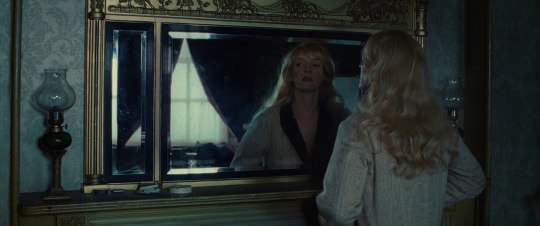

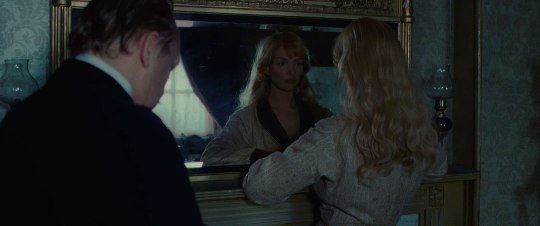
Remind me of what is gone


Singing from dusk till dawn: Nevermore nevermore nevermore

Raven can you hear me?


Thought you loved me but you fooled me


You drove me to madness. No one here to witness


Vicious and relentless


A villain in a black dress Too late, I should have listened --
#+ edits#these screencaps#v: the baroness#+ fc#my favorite is the last 2 images + the caption / a villain in a black dress/#so baroness#also I think if im not mistaken those are black feathers in her hair#asdfghj which is iconic also considering Pris in her theatre verse always donned peacock feathers
1 note
·
View note
Text

⌜ ♥ @independentzaun ⌟ ―― Baroness Caitlyn & Sevika ► kinky/rough smut prompts = ❝ Sevika at baroness: [ hair ] — my muse pulls your muse’s hair + [ bathe ] — my muse fucks your muse in the bath/shower ❞

It had been a quiet shower at first, the walls covered with the steam of hot water as she leaned up against the wall. Stones were heated as well, providing a layer of heat against her skin as she heard the steps of another. Her eye peeked up as the door opened up. "Anyone else I would be thrown out on the spot for disturbing my bath," Caitlyn mused, water running down her hair and over her shoulders, as she raised a brow. "You just going to stand there? You are more than welcome to join me, unless you prefer a show," The teasing jest left her lips as she turned back around, brushing her fingers through her hair and allowing the water to rinse away the soap that bubbled in her hair and down the drain.

A rustle of clothing caught her ears as she brushed her hands over her eyes and looked over to notice the red cape on the ground, and the pile of clothing only to suddenly feel her hair pulled sharply backwards. A moan left her lips, her blue eyes looking over her shoulder as she was pushed up against the wall and her hands pressed up against it. "Mhmm…." She moved one hand back, brushing up against Sevika's hip, and squeezed her palm to pull her closer. "Don't stop now," Caitlyn whispered, a hint between a pleading and a demand. There had always been excitement at Sevika's strength, her muscle-bound body up against hers, the way she could easily bend to her will. Despite being her boss, in moments like this she preferred to be at her mercy.
A shuddering gasp left her lips as suddenly fingers brushed against her sensitive nether region, between her natural warm hand mixed with the heated water falling upon them both like rain, Caitlyn's desires were easily known as she shifted to spread her legs apart. She shifted to lean her head down to try and look to see if Sevika was making any attempt to finger her, to push her digits deep into her wanton core yet the pull of Sevika's talons wouldn't let her hair go as she shiver with need. It didn't take long though, as Sevika started to finger her right there in the shower, her chest pressed up against Caitlyn's back. Pinned against the wall with nowhere else to go. "Oh fuck…yes!" Caitlyn cried out as there was no hiding it now; she wanted Sevika and she wanted this now.
#independentzaun#[muse] caitlyn — interactions.#[muse] caitlyn — answers.#au: chem baroness#finally have a reason to use those shower icons!#XD
1 note
·
View note
Text
hyperspecific sso nostalgia
"you have taken a dangerous fall" or falling off of a cliff so many times that you get taken back to your stable. also the screen turning red when this happened.
magic horses only turning magic if theyre away from civilization.
having to spam W or else your horse will slow down.
waiting for the bus and using the bus ticket.
using the circus ticket.
having to drag and drop items from your inventory.
jojo siwa at the disco.
spirit around jorvik.
collecting the stars and being so excited upon finding one.
certain horses being cold tolerant, [fjord, icelandic, etc] the others slowing down upon entering the valley of the hidden dinosaur.
finding gary goldtooth in the middle of nowhere.
low quality saddle bag pets and that stupid torn saddle bag.
not being able to stack items.
having to build reputation to progress.
the saving nightdust quest.
april fools updates, especially the 2016 supershire.
the summer bonfire event, the birthday event, the st. patricks day event, all of the holiday and seasonal events.
how the areas would be decorated for valentines day, easter, etc.
those things that would temporarily change your starter horses coat into all sorts of wacky things.
the barrel race in moorland.
the old filter.
the trailers being star rider only.
the closets being star rider only.
jumping being star rider only, and justin teaching you how to jump.
no jumping in towns/cities.
the original home stable.
waiting for the fairies and just BARELY missing it.
the baronesses racetrack being under construction for SO LONG.
jorvik not having any snow during christmas.
the 2017 character update and the ORIGINAL original character, plus the original weird looking starter horse.
horse island.
unnamed stable girl, the one that came before maya.
all of the old npcs.
when you enter a new area, the name of it would flash in the middle of your screen.
speed boosts on roads.
star stable news with ylva and matilda.
the loading screen stable cat who gave you tips.
the kallters.
having to build your reputation with the hermit to buy his horses and having to build your reputation with the kallters to buy fjord horses.
the iceberg and the seals.
the clothing and tack being basically unidentifiable until you hovered over them, because the items just had a gray or gold icon with what the item actually classified as. [aka what it looks like on mobile]
the fort pinta shark.
the global store not being around and having to buy things directly from the shops or the mall.
the infamous purple car and bulldozer that would run you over.
having to fill your houses needs multiple times a day plus the little smiley face mood thingy.
only being able to care for your horse near stables.
only having three uses for your water bucket.
unused furniture.
starshine roaming around greendale.
the "glue man" and the little girl in your stable singing during halloween.
wiiiiiiiiiiiiiiii!
the chat filter being called phil.
stacy place oh god stacy place. also archie fails
all of the star stable commercials and ads, especially that one fucking disney channel commercial.
please add your own nostalgias onto this post i would love to hear them
221 notes
·
View notes
Text
The long, bloody lineage of private equity's looting

Tomorrow (June 3) at 1:30PM, I’m in Edinburgh for the Cymera Festival on a panel with Nina Allen and Ian McDonald.
Monday (June 5) at 7:15PM, I’m in London at the British Library with my novel Red Team Blues, hosted by Baroness Martha Lane Fox.

Fans of the Sopranos will remember the “bust out” as a mob tactic in which a business is taken over, loaded up with debt, and driven into the ground, wrecking the lives of the business’s workers, customers and suppliers. When the mafia does this, we call it a bust out; when Wall Street does it, we call it “private equity.”
It used to be that we rarely heard about private equity, but then, as national chains and iconic companies started to vanish, this mysterious financial arrangement popped up with increasing frequency. When a finance bro’s presentation on why Olive Garden needed to be re-orged when viral, there was a lot off snickering about the decline of a tacky business whose value prop was unlimited carbs. But the bro was working for Starboard Value, a hedge fund that specialized in buhying out and killing off companies, pocketing billions while destroying profitable businesses.
https://www.salon.com/2014/09/17/the_real_olive_garden_scandal_why_greedy_hedge_funders_suddenly_care_so_much_about_breadsticks/
Starboard Value’s game was straightforward: buy a business, load it with debt, sell off its physical plant — the buildings it did business out of — pay itself, and then have the business lease back the buildings, bleeding out money until it collapsed. They pulled it with Red Lobster,and the point of the viral Olive Garden dis track was to soften up the company for its own bust out.
The bust out tactic wasn’t limited to mocking middlebrow family restaurants. For years, the crooks who ran these ops did a brisk trade in blaming the internet. Why did Sears tank? Everyone knows that the 19th century business was an antique, incapable of mounting a challenge in the age of e-commerce. That was a great smokescreen for an old-fashioned bust out that saw corporate looters make off with hundreds of millions, leaving behind empty storefronts and emptier pension accounts for the workers who built the wealth the looters stole:
https://prospect.org/economy/vulture-capitalism-killed-sears/
Same goes for Toys R Us: it wasn’t Amazon that killed the iconic toy retailer — it was the PE bosses who extracted $200m from the chain, then walked away, hands in pockets and whistling, while the businesses collapsed and the workers got zero severance:
https://www.washingtonpost.com/news/business/wp/2018/06/01/how-can-they-walk-away-with-millions-and-leave-workers-with-zero-toys-r-us-workers-say-they-deserve-severance/
It’s a good racket — for the racketeers. Private equity has grown from a finance sideshow to Wall Street’s apex predator, and it’s devouring the real economy through a string of audactious bust outs, each more consequential and depraved than the last.
As PE shows that it can turn profitable businesses gigantic windfalls, sticking the rest of us with the job of sorting out the smoking craters they leave behind, more and more investors are piling in. Today, the PE sector loves a rollup, which is when they buy several related businesses and merge them into one firm. The nominal business-case for a rollup is that the new, bigger firm is more “efficient.” In reality, a rollup’s strength is in eliminating competition. When all the pet groomers, or funeral homes, or urgent care clinics for ten miles share the same owner, they can raise prices, lower wages, and fuck over suppliers.
They can also borrow. A quirk of the credit markets is that a standalone small business is valued at about 3–5x its annual revenues. But if that business is part of a large firm, it is valued at 10–20x annual turnover. That means that when a private equity company rolls up a comedy club, ad agency or water bottler (all businesses presently experiencing PE rollup), with $1m in annual revenues, it shows up on the PE company’s balance sheet as an asset worth $10–20m. That’s $10–20m worth of collateral the PE fund can stake for loans that let it buy and roll up more small businesses.
2.9 million Boomer-owned businesses, employing 32m people, are expected to sell in the next couple years as their owners retire. Most of these businesses will sell to PE firms, who can afford to pay more for them as a prelude to a bust out than anyone intending to operate them as a productive business could ever pay:
https://pluralistic.net/2022/12/16/schumpeterian-terrorism/#deliberately-broken
PE’s most ghastly impact is felt in the health care sector. Whole towns’ worth of emergency rooms, family practices, labs and other health firms have been scooped up by PE, which has spent more than $1t since 2012 on health acquisitions:
https://pluralistic.net/2022/11/17/the-doctor-will-fleece-you-now/#pe-in-full-effect
Once a health care company is owned by PE, it is significantly more likely to commit medicare fraud. It also cuts wages and staffing for doctors and nurses. PE-owned facilities do more unnecessary and often dangerous procedures. Appointments get shorter. The companies get embroiled in kickback scandals. PE-backed dentists hack away at children’s mouths, filling them full of root-canals.
https://pluralistic.net/2022/11/17/the-doctor-will-fleece-you-now/#pe-in-full-effect
The Healthcare Private Equity Association boasts that its members are poised to spend more than $3t to create “the future of healthcare.”
https://hcpea.org/#!event-list
As bad as PE is for healthcare, it’s worse for long-term care. PE-owned nursing homes are charnel houses, and there’s a particularly nasty PE scam where elderly patients are tricked into signing up for palliative care, which is never delivered (and isn’t needed, because the patients aren’t dying!). These fake “hospices” get huge payouts from medicare — and the patient is made permanently ineligible for future medicare, because they are recorded being in their final decline:
https://pluralistic.net/2023/04/26/death-panels/#what-the-heck-is-going-on-with-CMS
Every part of the health care sector is being busted out by PE. Another ugly PE trick, the “club deal,” is devouring the medical supply business. Club deals were huge in the 2000s, destroying rent-controlled housing, energy companies, Mervyn’s department stores, Harrah’s, and Old Country Joe. Now it’s doing the same to medical supplies:
https://pluralistic.net/2021/05/14/billionaire-class-solidarity/#club-deals
Private equity is behind the mass rollup of single-family homes across America. Wall Street landlords are the worst landlords in America, who load up your rent with junk fees, leave your home in a state of dangerous disrepair, and evict you at the drop of a hat:
https://pluralistic.net/2021/08/16/die-miete-ist-zu-hoch/#assets-v-human-rights
As these houses decay through neglect, private equity makes a bundle from tenants and even more borrowing against the houses. In a few short years, much of America’s desperately undersupplied housing stock will be beyond repair. It’s a bust out.
You know all those exploding trains filled with dangerous chemicals that poison entire towns? Private equity bust outs:
https://pluralistic.net/2022/02/04/up-your-nose/#rail-barons
Where did PE come from? How can these people look themselves in the mirror? Why do we let them get away with it? How do we stop them?
Today in The American Prospect, Maureen Tkacik reviews two new books that try to answer all four of these questions, but really only manage to answer the first three:
https://prospect.org/culture/books/2023-06-02-days-of-plunder-morgenson-rosner-ballou-review/
The first of these books is These Are the Plunderers: How Private Equity Runs — and Wrecks — America by Gretchen Morgenson and Joshua Rosner:
https://www.simonandschuster.com/books/These-Are-the-Plunderers/Gretchen-Morgenson/9781982191283
The second is Plunder: Private Equity’s Plan to Pillage America, by Brendan Ballou:
https://www.hachettebookgroup.com/titles/brendan-ballou/plunder/9781541702103/
Both books describe the bust out from the inside. For example, PetSmart — looted for $30 billion by RaymondSvider and his PE fund BC Partners — is a slaughterhouse for animals. The company systematically neglects animals — failing to pay workers to come in and feed them, say, or refusing to provide backup power to run during power outages, letting animals freeze or roast to death. Though PetSmart has its own vet clinics, the company doesn’t want to pay its vets to nurse the animals it damages, so it denies them care. But the company is also too cheap to euthanize those animals, so it lets them starve to death. PetSmart is also too cheap to cremate the animals, so its traumatized staff are ordered to smuggle the dead, rotting animals into random dumpsters.
All this happened while PetSmart’s sales increased by 60%, matched by growth in the company’s gross margins. All that money went to the bust out.
https://www.forbes.com/sites/antoinegara/2021/09/27/the-30-billion-kitty-meet-the-investor-who-made-a-fortune-on-pet-food/
Tkacik says these books show that we’re finally getting wise to PE. Back in the Clinton years, the PE critique painted the perps as sharp operators who reduced quality and jacked up prices. Today, books like these paint these “investors” as the monsters they are — crooks whose bust ups are crimes, not clever finance hacks.
Take the Carlyle Group, which pioneered nursing home rollups. As Carlyle slashed wages, its workers suffered — but its elderly patients suffered more. Thousands of Carlyle “customers” died of “dehydration, gangrenous bedsores, and preventable falls” in the pre-covid years.
https://www.washingtonpost.com/business/economy/opioid-overdoses-bedsores-and-broken-bones-what-happened-when-a-private-equity-firm-sought-profits-in-caring-for-societys-most-vulnerable/2018/11/25/09089a4a-ed14-11e8-baac-2a674e91502b_story.html
KKR, another PE monster, bought a second-hand chain of homes for mentally disabled adults from another PE company, then squeezed it for the last drops of blood left in the corpse. KKR cut wages to $8/hour and increased shifts to 36 hours, then threatened to have workers who went home early arrested and charged with “patient abandonment.” Many of these homes were often left with no staff at all, with patients left to starve and stew in their own waste.
PE loves to pick on people who can’t fight back: kids, sick people, disabled people, old people. No surprise, then, that PE loves prisons — the ultimate captive audience. HIG Capital is a $55b fund that owns TKC Holdings, who got the contract to feed the prisoners at 400 institutions. They got the contract after the prisons fired Aramark, owned by PE giant Warburg Pincus, whose food was so inedible that it provoked riots. TKC got a million bucks extra to take over the food at Michigan’s Kinross Correctional Facility, then, incredibly, made the food worse. A chef who refused to serve 100 bags of rotten potatoes (“the most disgusting thing I’ve seen in my life”) was fired:
https://www.wzzm13.com/article/news/local/michigan/prison-food-worker-i-was-fired-for-refusing-to-serve-rotten-potatoes/69-467297770
TKC doesn’t just operate prison kitchens — it operates prison commissaries, where it gouges prisoners on junk food to replace the inedible slop it serves in the cafeteria. The prisoners buy this food with money they make working in the prison workshops, for $0.10–0.25/hour. Those workshops are also run by TKC.
Tkacic traces private equity back to the “corporate raiders” of the 1950s and 1960s, who “stealthily borrowed money to buy up enough shares in a small or midsized company to control its biggest bloc of votes, then force a stock swap and install himself as CEO.”
The most famous of these raiders was Eli Black, who took over United Fruit with this gambit — a company that had a long association with the CIA, who had obligingly toppled democratically elected governments and installed dictators friendly to United’s interests (this is where the term “banana republic” comes from).
Eli Black’s son is Leon Black, a notorious PE predator. Leon Black got his start working for the junk-bonds kingpin Michael Milken, optimizing Milken’s operation, which was the most terrifying bust out machine of its day, buying, debt-loading and wrecking a string of beloved American businesses. Milken bought 2,000 companies and put 200 of them through bankruptcy, leaving the survivors in a brittle, weakened state.
It got so bad that the Business Roundtable complained about the practice to Congress, calling Milken, Black, et al, “a small group is systematically extracting the equity from corporations and replacing it with debt, and incidentally accumulating major wealth.”
Black stabbed Milken in the back and tanked his business, then set out on his own. Among the businesses he destroyed was Samsonite, “a bankrupt-but-healthy company he subjected to 12 humiliating years of repeated fee extractions, debt-funded dividend payments, brutal plant closings, and hideous schemes to induce employees to buy its worthless stock.”
The money to buy Samsonite — and many other businesses — came through a shadowy deal between Black and John Garamendi, then a California insurance commissioner, now a California congressman. Garamendi helped Black buy a $6b portfolio of junk bonds from an insurance company in a wildly shady deal. Garamendi wrote down the bonds by $3.9b, stealing money “from innocent people who needed the money to pay for loved ones’ funerals, irreparable injuries, etc.”
Black ended up getting all kinds of favors from powerful politicians — including former Connecticut governor John Rowland and Donald Trump. He also wired $188m to Jeffrey Epstein for reasons that remain opaque.
Black’s shady deals are a marked contrast with the exalted political circles he travels in. Despite private equity’s obviously shady conduct, it is the preferred partner for cities and states, who buy everything from ambulance services to infrastructure from PE-owned companies, with disastrous results. Federal agencies turn a blind eye to their ripoffs, or even abet them. 38 state houses passed legislation immunizing nursing homes from liability during the start of the covid crisis.
PE barons are shameless about presenting themselves as upstanding cits, unfairly maligned. When Obama made an empty promise to tax billionaires in 2010, Blackstone founder SteveS chwarzman declared, “It’s a war. It’s like when Hitler invaded Poland in 1939.”
Since we’re on the subject of Hitler, this is a good spot to bring up Monowitz, a private-sector satellite of Auschwitz operated by IG Farben as a slave labor camp to make rubber and other materiel it supplied at a substantial markup to the wermacht. I’d never heard of Monowitz, but Tkacik’s description of the camp is chilling, even in comparison to Auschwitz itself.
Farben used slave laborers from Auschwitz to work at its rubber plant, but was frustrated by the logistics of moving those slaves down the 4.5m stretch of road to the facility. So the company bought 25,000 slaves — preferring children, who were cheaper — and installed them in a co-located death-camp called Monowitz:
https://www.commentary.org/articles/r-tannenbaum/the-devils-chemists-by-josiah-e-dubois-jr/
Monowitz was — incredibly — worse than Auschwitz. It was so bad, the SS guards who worked at it complained to Berlin about the conditions. The SS demanded more hospitals for the workers who dropped from beatings and overwork — Farben refused, citing the cost. The factory never produced a steady supply of rubber, but thanks to its gouging and the brutal treatment of its slaves, the camp was still profitable and returned large dividends to Farben’s investors.
Apologists for slavery sometimes claim that slavers are at least incentivized to maintain the health of their captive workforce. This was definitely not true of Farben. Monowitz slaves died on average after three months in the camp. And Farben’s subsidiary, Degesch, made the special Zyklon B formulation used in Auschwitz’s gas chambers.
Tkacik’s point is that the Nazis killed for ideology and were unimaginably cruel. Farben killed for money — and they were even worse. The banality of evil gets even more banal when it’s done in service to maximizing shareholder value.
As Farben historian Joseph Borkin wrote, the company “reduced slave labor to a consumable raw material, a human ore from which the mineral of life was systematically extracted”:
https://www.scribd.com/document/517797736/The-Crime-and-Punishment-of-I-G-Farben
Farben’s connection to the Nazis was a the subject of Germany’s Master Plan: The Story of Industrial Offensive, a 1943 bestseller by Borkin, who was also an antitrust lawyer. It described how Farben had manipulated global commodities markets in order to create shortages that “guaranteed Hitler’s early victories.”
Master Plan became a rallying point in the movement to shatter corporate power. But large US firms like Dow Chemical and Standard Oil waged war on the book, demanding that it be retracted. Borkin was forced into resignation and obscurity in 1945.
Meanwhile, in Nuremberg, 24 Farben executives were tried for their war crimes, and they cited their obligations to their shareholders in their defense. All but five were acquitted on this basis.
Seen in that light, the plunderers of today’s PE firms are part of a long and dishonorable tradition, one that puts profit ahead of every other priority or consideration. It’s a defense that wowed the judges at Nuremberg, so should we be surprised that it still plays in 2023?
Tkacik is frustrated that neither of these books have much to offer by way of solutions, but she understands why that would be. After all, if we can’t even close the carried interest tax loophole, how can we hope to do anything meaningful?
“Carried interest” comes up in every election cycle. Most of us assume it has something to do with “interest payments,” but that’s not true. The carried interest loophole relates to the “interest” that 16th-century sea captains had in their cargo. It’s a 600-year-old tax loophole that private equity bosses use to pay little or no tax on their billions. The fact that it’s still on the books tells you everything you need to know about whether our political class wants to do anything about PE’s plundering.
Notwithstanding Tkacik’s (entirely justified) skepticism of the weaksauce remedies proposed in these books, there is some hope of meaningful action. Private equity’s rollups are only possible because they skate under the $101m threshold for merger scrutiny. However, there is good — but unenforced — law that allows antitrust enforcers to block these mergers. This is the “incipiency standard” — Sec 7 of the Clayton Act — the idea that a relatively small merger might not be big enough to trigger enforcement action on its own, but regulators can still act to block it if it creates an incipient monopoly.
https://pluralistic.net/2022/12/16/schumpeterian-terrorism/#deliberately-broken
The US has a new crop of aggressive — fearless — top antitrust enforcers and they’ve been systematically reviving these old laws to go after monopolies.
That’s long overdue. Markets are machines for eroding our moral values: “In comparison to non-market decisions, moral standards are significantly lower if people participate in markets.”
https://web.archive.org/web/20130607154129/https://www.uni-bonn.de/Press-releases/markets-erode-moral-values
The crimes that monsters commit in the name of ideology pale in comparison to the crimes the wealthy commit for money.

Catch me on tour with Red Team Blues in Edinburgh, London, and Berlin!
If you’d like an essay-formatted version of this post to read or share, here’s a link to it on pluralistic.net, my surveillance-free, ad-free, tracker-free blog:
https://pluralistic.net/2023/06/02/plunderers/#farbenizers

[Image ID: An overgrown graveyard, rendered in silver nitrate monochrome. A green-tinted businessman with a moneybag in place of a head looms up from behind a gravestone. The right side of the image is spattered in blood.]
#pluralistic#kkr#lootersprivate equity#plunderers#books#reviews#monsters#nazis#godwin's law#godwins law#auschwitz#ig farben#pe#business#barbarians#united fruit#carried interest#corporate raiders#junk bonds#michael milliken#ensemble cast#carlyle group#monowitz#leon black
1K notes
·
View notes
Text


✨ the disney queen-ification-ish of baroness elsa schraeder from the sound of music (1965) in dark mode and light mode
also did this! because she's genuinely the perfect villain-esque possible step-mom, smug af how can love survive-singing icon whom i love with all my heart


✨ the disney princess-ification-ish of maria from the sound of music (1965)
genuinely sorry for all friends who are moots with me in most platforms because i'm posting this EVERYWHERE<3
#the sound of music#the sound of music (1965)#the hills are alive#fanart#art#my art#digital art#elsa schraeder#baroness schraeder#icon fr#to think that she was also based on#YOU GUESSED IT#A PRINCESS#bc georg (real) was literally engaged to a princess#anyways#ep#eleanor parker#<3
20 notes
·
View notes
Text

— The Three [Yoichi Isagi, Seishiro Nagi, Shoei Baro] anime: BLUE LOCK ok @Getsesko ig: instagram.com/getsesko
#the three#yoichi isagi#yoichi#isagi#isagi yoichi#blue lock isagi#seishiro nagi#seishiro#nagi#nagi seishiro#shoei baro#shoei#baro#baro shoei#blue lock nagi#blue lock baro#anime#BLUE LOCK#blue lock barou#anime icons#anime icon#icon boy#icons#icon boys#anime boy#football#monsters#baro king#barou king#manga
144 notes
·
View notes
Text
Narrative Permission
People can do a lot of different things and RPGs are usually not concerned with making up rules for every single possible action anyone could take.
There are some actions that are neither so common that it can be reasonably assumed that anyone can do them nor are they something that the game system concerns itself with.
Languages and artistic skills are pretty common examples that less complex systems usually don't bother with. In cases like this, your background could give you the narrative permission to use these skills.
For example, if your Scoundrel character in Thirsty Sword Lesbians is a musician you have the narrative permission to play a song to impress the Baroness while other characters might not. Functionally, you are still just rolling +Heart for an Entice move, but you can flavour it differently.
Another type of narrative permission can be found in Call of Cthulhu.
While your skills are obviously mostly there so you can roll skillchecks, they can also grant various kinds of narrative permissions.
For example, while regular driving explicitly doesn't require a skill check, you're (usually) still going to require narrative permission through skill investment to drive anything that isn't a car. For example, if you want to drive around in some kind of construction vehicle like an excavator, you're gonna need a couple of skill points in heavy machenery, even if you don't need to roll to drive it (again, assuming regular driving. If you're in a desperate fight against a dark young and try to hit it with an excavator despite not having any experience controlling one, go ahead and roll for it)
High levels in skills can also give you narrative permission to know a guy. An average investigator probably isn't going to know any professors of physics but if you have a high education stat, you might know someone.
Equipment in CoC is also mostly done through narrative permission. While you might name some important items explicitly during character creation, most possesions in the game are handled by asking "Would it be reasonable for someone like this to have this?"
Does the 1920s student own a truck capable of transporting a bunch of crates full of evidence? Probably not. Does the 1930s smuggler? Of course.
In ICON, there are many cases where narrative permission plays an interesting role.
Obviously they only matter for narrative play because in tactical combat, what you can and can't do is pretty strictly defined. However, your abilities in tactical combat can influence your narrative permissions.
A spellblade with various teleport abilities has narrative permission to teleport. Depending on the GM, this may increase effect or decrease risk on some Traverse checks, or it might even remove the need for them entirely.
But this can only get you so far. If you didn't put any points in Smash, no amount of arguing about being a Collossus who can do all kinds of cool Smash-adjacent things in combat is going to make it so you have more than 0 Smash in narrative. You need to select your narrative skills in a way that supports the fantasy of your character, including their tactical combat fantasy.
Also there is your narrative gear, which isn't supposed to represent every single piece of equipment your character posses, just the stuff that really matters, and which broadly falls into two categories: Things that are listed there so you don't have to argue about whether you have it (e.g. light sources, rations, a tent) and things that are supposed to inspire you (e.g. single-use flash bomb, copious sweets)
Both exist to grant you narrative permissions, but the first category is more about making sure you have narrative permissions you probably would have had anyway in a system without gear tracking (such as previous editions of ICON), the second category can actually expand your narrative permissions or give you new ideas for things to do.
Without your gear explicitly mentioning you have these things you might have never even gotten the idea of using a flash bomb to escape the guards, or use sweets to calm down a child. But even if you had gotten the idea on your own, explicitly calling out that you have these things can save a lot of time on trying to convince your GM that you have them.
However, the flipside to this is that having a gear system like this makes the gaps stand out more. I keep bringing up not having to convince your GM that you have something, but if there is something that you feel like you should have but that isn't listed in your gear, the existence of the gear system might make it harder to convince them that you should have it.
The system is an interesting middle ground between gearing systems that make you track everything you have (e.g. dnd 5e) and one that barely makes you track anything (e.g. CoC)
Are there any intersting examples of narrative permission you know?
119 notes
·
View notes
Text

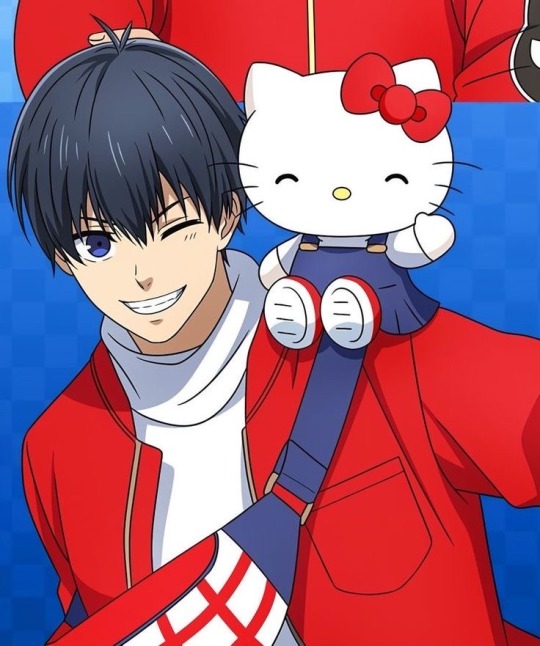







#blue lock#blue lock pfps#blue lock pfp#blue lock icons#blue lock icon#seishiro nagi#nagi seishiro#isagi yoichi#yoichi isagi#reo mikage#rensuke kunigami#hyoma chigiri#meguru bachira#shoei baro
66 notes
·
View notes
Text
Owlcatober - Day 2 - Fake Names (KM)
Day 2 of @owlcatober, focusing on a group of differently named adventurers preparing to infiltrate the Kingdom of the Cleansed...
[Ao3 Link]
And so dear readers, we leave the tale of the Baroness to follow the deeds of Sir Tristian, friend to Amalia of the Kingdom of the Cleansed! And the tale is now written not by Linzi the [insert title later], but Brynn the Ca
“Story check.”
Linzi looked up as she was interrupted by Ekundayo, her heavy maille shirt rustling as she did. They were all dressed differently, even Tristian had traded his Sarenite robes for the earthen robes of a humble pilgrim. A large black furred wolf with a riding harness was also sitting by the fire with them, next to Tristian at the moment.
“C’mon,” Amiri growled, clearly unhappy without her oversized sword in favor of the javelins, hatchet, and small shield of a skirmisher, “We went over this a bunch of times. I’m not dumb, I’m even learning those stupid letters!”
“Stories fall apart in the details,” Ekun retorted, having wrapped his head in cloth in a Thuvian style. “I will start: Taiwo, mercenary from Thuvia. Came north to see the world, offered to guide Tristian’s party. Prefer to be left alone.”
Amiri grunted, shaking head. “Fine - Valeria, thief from Numeria. Got caught robbing a League tower, sold as a slave, broke out after pushing a mill wheel for years, looking for a new life in Gevaudan.” She glanced at Octavia, “You next.”
“You had to use that as a background…” the wizardess exhaled, shaking her head despite the large pointy hat and thick black robes she was wearing. “Okay: Aurelia, necromancer from Galt trying to redeem herself. Fond of quite good whisky, late night strolls, and hates cities.”
Their attention turned to Kaessi, wearing a worn gambeson with a spear propped next to her seat on a log. “Layla. I came here to make a new life away from Qadira, joined a village militia with other settlers, and deserted after the troll attacks.” She cast a particularly harsh glare towards Tristian - the kind that stayed whether she was feeling kind or harsh that day. “So why does he not need to lie?”
“Amalia is… not fully aware,” Tristan admitted, looking down as if in shame as he was judged by kindness. “She knows me only as a humble pilgrim who was interested in how the Kingdom of the Cleansed offers redemption.”
“The covers were my suggestion,” Ekundayo added, “to reduce suspicion.” He turned to Linzi, then frowned at her notes. “I thought you left the book behind? Too iconic.”
Linzi exhaled. Yes, he had been quite firm on that. “A Cavalier of the Paw still has her entry in the annals to consider! A worthy cause sought, and a worthier one to charge into!” She stood up, the heroicness of the pose rather dampened by stumbling. Linzi was unused to the weight of maille on her shoulders, even with the belt of strength that Valerie had lent her.
“Regardless,” the bard-pretending-to-be-cavalier continued, “You can be sure to follow Brynn into gllloorrrrrrious battle!”
“Speaking of paws,” Amiri grumbled, “where’s Dog?”
Ekun sighed. “Too known. Besides, someone else plays the role of war wolf. Brynn?”
“Oh, right,” Linzi had almost forgotten the most important part! “Thank you Sir Tristian for keeping an eye on Gnaw while at Tuskdale!”
She could see Kaessi tilting her head and mouthing ‘Gnaw’ in confusion as the large black furred wolf rose and sniffed Tristian’s hand.
“Perhaps you should get her out of the harness for tonight,” Tristian suggested, gesturing towards Linzi.
“Oh, of course!” Linzi really should have known better. She didn’t have a squire, after all! Then again, I end up playing squire often enough… she thought as she started removing the strapping. Oh, if only she could write what she was really doing: she knew readers would have a laugh at it.
Hopefully the Baroness did not realize it either. That would be awkward. And embarrassing.
====
NOTES:
While I do not plan on doing as much with Kingmaker for Owlcatober, I did want to do a few things and test the waters a bit. Since KM was my first stab into Pathfinder at all I went relatively generic, and the baroness I rolled for it ended up as the proto version of Elaina. I've been mulling on ways to reroll her to stand out as her own character. Luckily, a confluence of circumstances such as the name I grabbed for the barony and certain problems like "They're In This Together!" constantly repeating offered an idea...
#owlcatober 2024#pathfinder kingmaker#linzi kingmaker#tristian kingmaker#ekundayo#amiri#kaessi#kalikke#octavia kingmaker
15 notes
·
View notes